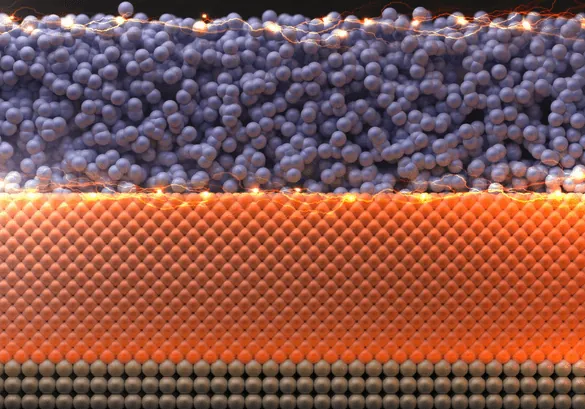
Breakthrough in Nanoelectronics: Ultrathin Conductors Outperform Copper!
2025-01-13
Author: Ming
Researchers at Stanford Engineering have made a groundbreaking advancement in nanoelectronics by developing an ultrathin material that not only surpasses copper in electrical conductivity but could also pave the way for energy-efficient next-generation electronics.
As technology evolves and computer chips shrink, the traditional metallic wires that transmit electrical signals within these chips have emerged as a critical limitation. Standard metals generally lose efficiency as they are manufactured thinner, thereby capping the overall size, efficacy, and performance of nanoscale devices.
In an influential paper published on January 3 in the journal Science, Stanford researchers unveiled a remarkable discovery: niobium phosphide (NbP) demonstrates superior conductivity compared to copper, even when crafted into films measuring just a few atoms thick. Remarkably, these films can be produced at low temperatures, aligning perfectly with contemporary chip fabrication techniques. This advancement is expected to significantly enhance the power and energy efficiency of future electronic devices.
Dr. Asir Intisar Khan, a former doctoral student at Stanford and the first author on the paper, emphasized the monumental nature of this discovery. "We are breaking a fundamental bottleneck of traditional materials like copper. Our niobium phosphide conductors showcase the possibility of transmitting faster, more efficient signals through ultrathin wires. Even marginal gains accumulated across numerous chips, which are deployed en masse in data centers, could lead to substantial power savings."
The Science Behind Niobium Phosphide
Niobium phosphide is classified as a topological semimetal, meaning its entire structure can conduct electricity, but its outer surfaces exhibit much higher conductivity than its interior. As the film of niobium phosphide is scaled down, the inner region diminishes while the outer layers remain intact, allowing the surface to dominate in electrical flow—an attribute that sets it apart from traditional metals like copper. Typically, copper's performance deteriorates significantly when reduced to thicknesses below 50 nanometers.
The researchers pinpointed that niobium phosphide retains its superior conductive properties below 5 nanometers, even functioning efficiently at room temperature. In contrast, copper struggles to maintain rapid electrical signal transmission at this scale, leading to substantial energy losses through heat generation.
Dr. Eric Pop, the Pease-Ye Professor in the School of Engineering and senior author on the study, noted, "High-density electronics demand extremely thin metal connections. Without effective conductivity, these metals waste substantial power and energy. By utilizing advanced materials, we could redirect more energy towards computational tasks rather than losing it in thin wires."
What's Next?
The implications of this research extend beyond basic conductivity improvements. This innovative material could potentially revolutionize various fields, including computing, telecommunications, and medical devices, where miniaturization is key. By fostering enhanced performance in increasingly small electronic components, niobium phosphide could help meet the insatiable demand for speed and efficiency in today's technology-driven world.
As we look to the future, the potential of niobium phosphide fosters exciting possibilities in the quest for ultra-advanced, highly efficient electronics that could shape the landscape of technology for years to come. Keep an eye out, as this could be just the beginning of a new era in nanoelectronics!
 Brasil (PT)
Brasil (PT)
 Canada (EN)
Canada (EN)
 Chile (ES)
Chile (ES)
 Česko (CS)
Česko (CS)
 대한민국 (KO)
대한민국 (KO)
 España (ES)
España (ES)
 France (FR)
France (FR)
 Hong Kong (EN)
Hong Kong (EN)
 Italia (IT)
Italia (IT)
 日本 (JA)
日本 (JA)
 Magyarország (HU)
Magyarország (HU)
 Norge (NO)
Norge (NO)
 Polska (PL)
Polska (PL)
 Schweiz (DE)
Schweiz (DE)
 Singapore (EN)
Singapore (EN)
 Sverige (SV)
Sverige (SV)
 Suomi (FI)
Suomi (FI)
 Türkiye (TR)
Türkiye (TR)
 الإمارات العربية المتحدة (AR)
الإمارات العربية المتحدة (AR)